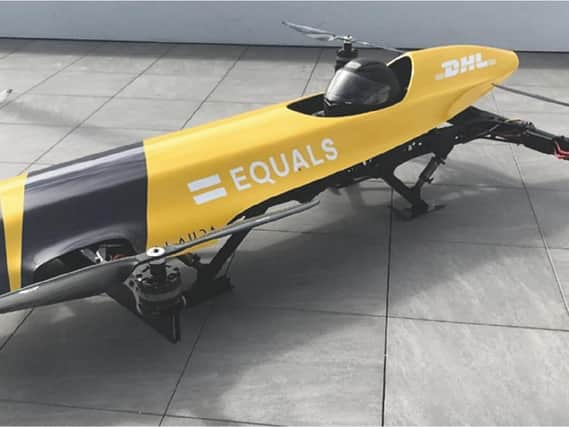Goodwood drone crash: Aircraft was 'poor quality' investigation finds


Whilst performing a demonstration flight at Goodwood Aerodrome, on July 4 2019 the remote pilot lost control of the 95 kg unmanned aircraft, an Alauda Airspeeder Mk II scale demonstrator.
After the loss of control had been confirmed by the remote pilot, the safety ‘kill switch’ was operated but had no effect.
Advertisement
Hide AdAdvertisement
Hide AdThe unmanned aircraft then climbed to approximately 8,000 ft, entering controlled airspace at a holding point for flights arriving at Gatwick Airport, before its battery depleted and it fell to the ground. It crashed in a field of crops approximately 40m from occupied houses and 700m outside of its designated operating area. Fortunately, there were no injuries.
Crispin Orr, chief inspector of air accidents said: “The innovative development of unmanned aircraft systems continues to be rapid, and the exploitation of these technologies in a wide variety of novel applications is remarkable. However, this is not completely without risk to the general public. Thankfully there were no injuries caused by this accident but the potential for a more serious outcome was clear.
"This accident demonstrates why it is so important that manufacturers, operators and regulators of unmanned aircraft ensure they are airworthy and operated in a safe and appropriate manner. The investigation has provided a rich opportunity to learn and many safety actions have been taken or recommended to improve the safety of unmanned aviation.”
The AAIB found that the Airspeeder Mk II was not designed, built or tested to any recognisable engineering or airworthiness standards, and that its design and build quality were poor. The operator’s Operating Safety Case contained errors and inaccuracies.
Advertisement
Hide AdAdvertisement
Hide AdThe Civil Aviation Authority’s Unmanned Aircraft Systems Unit had assessed the operator’s application and, after clarification and amendment of some aspects, issued an exemption to the Air Navigation Order to allow demonstration flights in accordance with the operator’s Operating Safety Case. The Civil Aviation Authority did not inspect the Airspeeder Mk II before doing so.
The Civil Aviation Authority and the organisation which designed and operated the Airspeeder MK II have subsequently introduced measures to address a number of issues identified during the course of the investigation.
In addition to the actions already taken, this investigation report makes 15 Safety Recommendations regarding airworthiness standards, safety management and the regulatory oversight of unmanned aircraft systems.